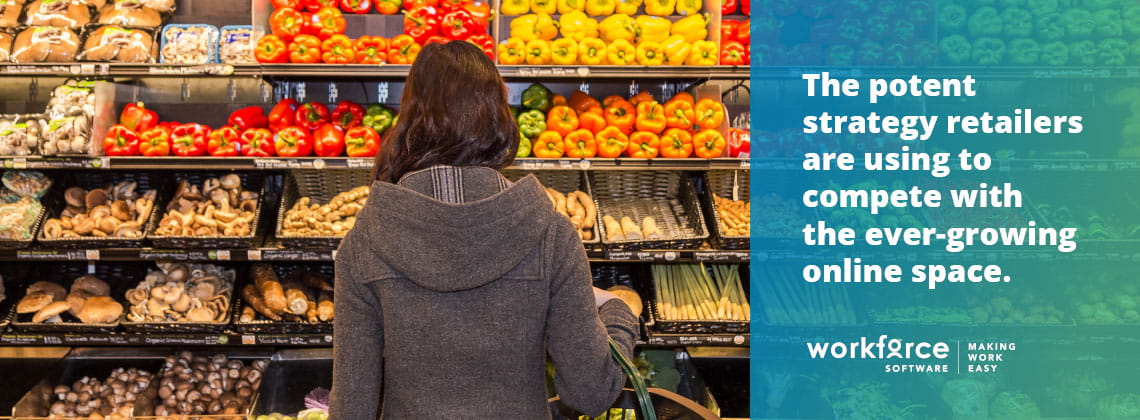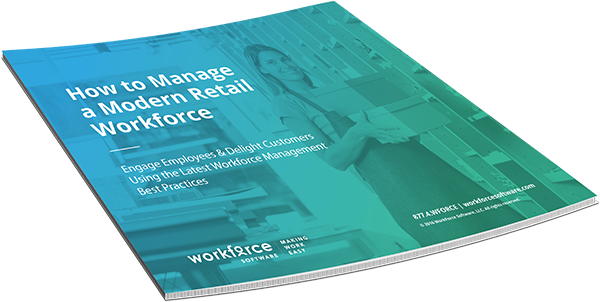Will Online Shopping Kill the Retail Store?

Brittany finally walked through the door at 7:30 PM.
After work, she stopped at the supermarket to buy groceries for the week. The stop took an hour, a little longer than usual because the lines, randomly, were longer than usual. Brittany usually zones out in line. She tries not to think about how much her feet hurt.
“Hey, Brit,” her husband greeted her at the door, offering a hand with the bags. “Guess what?”
“What?”
“I signed us up for one of those services that deliver groceries right to our house.”
“You did?”
“Yeah, the first order comes next week,” he said. “Convenient!”
“Isn’t it expensive?” Brittany asked, but her tone was cautiously optimistic. After all, she doesn’t particularly like going to the store … she’s just used to it.
“Nah,” said her husband, “we can swing it.”
By 2020, online grocery sales will rise to $18 billion.
According to Mintel, a market research company, 31% of consumers made an online grocery purchase in 2015.
By 2016, 5% of U.S. consumers preferred shopping for groceries online, amounting to some $7 billion in sales. By 2020, that figure is projected to rise to $18 billion.
Couple that with the potential of grocery automation apps (designed to recognize ordering patterns and, in that way, anticipate individual needs) and one can begin to imagine a world without brick and mortar supermarkets.
Subscribe to The WorkForce Blog
Learn the art and science of maintaining productive, happy, engaged employees.
Will online shopping kill the retail store?
It will, yes … unless retailers meet the problem head-on with value.
In this context, value refers to focusing on the customer experience. Because a great experience will give people a reason to go shopping. A unique, value-driven reason will compel shoppers to make an effort in a time when effort, frankly, is no longer necessary to attain the products we need or want.
That said, retailers can’t change the traditional elements shoppers identify with: The associates, the carts and baskets, the space itself. These elements are as much a part of the store as the products themselves; they’re everything online doesn’t have.
Without these elements, stores would cease being stores. So you can’t remove them, but you can change the way people interact with them.
For context, let’s examine this concept through the lens of a grocer:
1. The Space:
Information add-ons will increase the value provided by virtually any space in your store.
The more stories your walls and tables and isles tell, the more engaged people will be as they shop.
Here are several ways to improve your space:
- Display statistics: Give conscious consumers easy access to information, like nutritional content, pesticide details, estimated carbon footprint, and other facts. These could be shown manually or via digital screens adjacent or above your displays.
- Provide product suggestions: Based on a shopper’s predetermined dietary preferences.
- Relay shopping statistics: Show people the most-purchased items, for example.
2. The Cart:
Efficiency and convenience add-ons will increase the value a cart or basket provides.
Smart carts, which come equipped with a tablet or built-in screen, can add tremendous value to the shopping experience. For instance, shoppers can use them to:
- Have fun: Looking up recipes on-the-go.
- Be organized: Ticking items off of a digital shopping list.
- Stay efficient: Learning the fastest route to pick up a series of items.
- Save money and buy more: Browsing coupons based on their in-store location.
 How to Manage a Modern Retail Workforce
How to Manage a Modern Retail Workforce
Learn how to use the latest workforce management best practices to engage your retail employees and delight customers.
3. The Associate:
Giving your associates more control over their work and schedule will, ultimately, increase the value they provide.
People balance out technology. In the grocery stores of tomorrow, they’ll provide a humanistic, high-touch element to the shopping experience:
- Fostering trust: Creating relationships with repeat customers.
- Building consumer brands: Helping people discover and explore new products.
- Creating a sense of community: Reinforcing the social joys of breaking bread together.
That level of employee engagement, however, demands a degree of personal satisfaction and happiness. Emotions, after all, affect human performance in a profound way.
Happy people—people who are empowered at work and, therefore, have more control over their personal lives—are typically driven employees, as well.
Too long; didn’t read:
Online shopping is taking market share away from traditional brick and mortar stores.
To maintain a competitive edge, retailers must double down on what makes them traditional in the first place: The physical space, the equipment and, of course, the people. They have to double-down on these elements, enabling them to provide more value, which will result in an improved customer experience and, in turn, more sales.
Empower your people.
Modern workforce management software will give your associates more control, driving employee engagement and sales.


 How to Manage a Modern Retail Workforce
How to Manage a Modern Retail Workforce